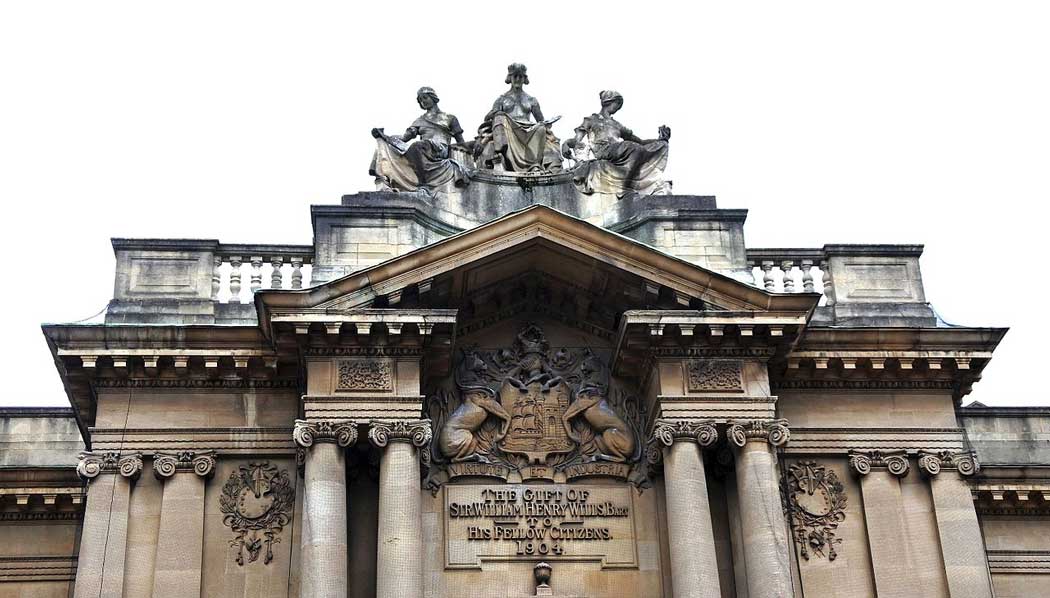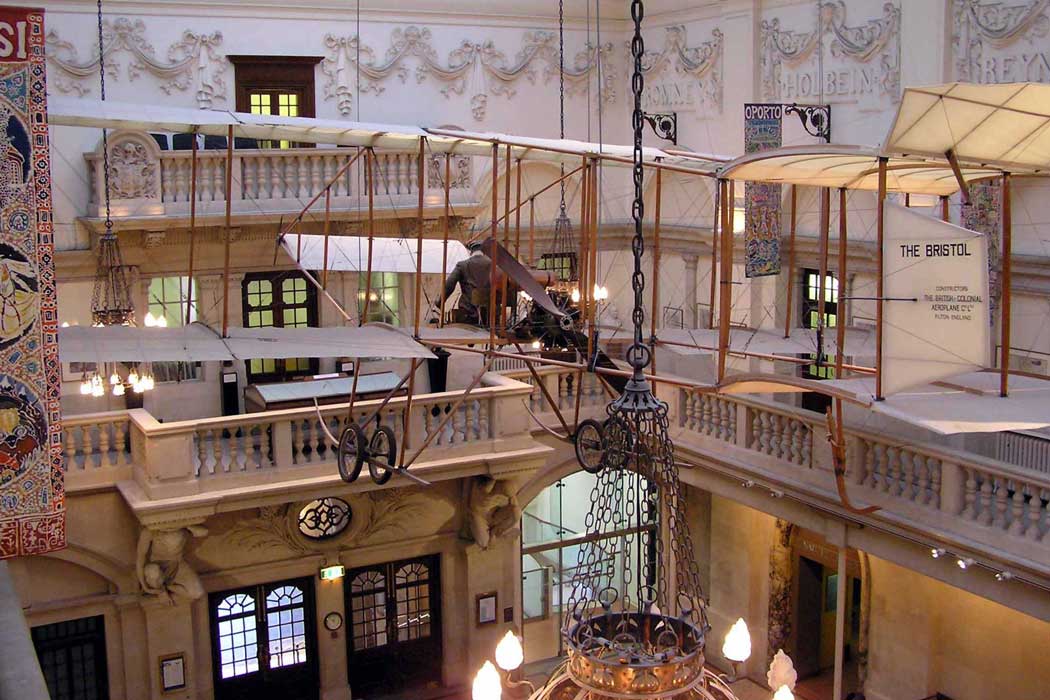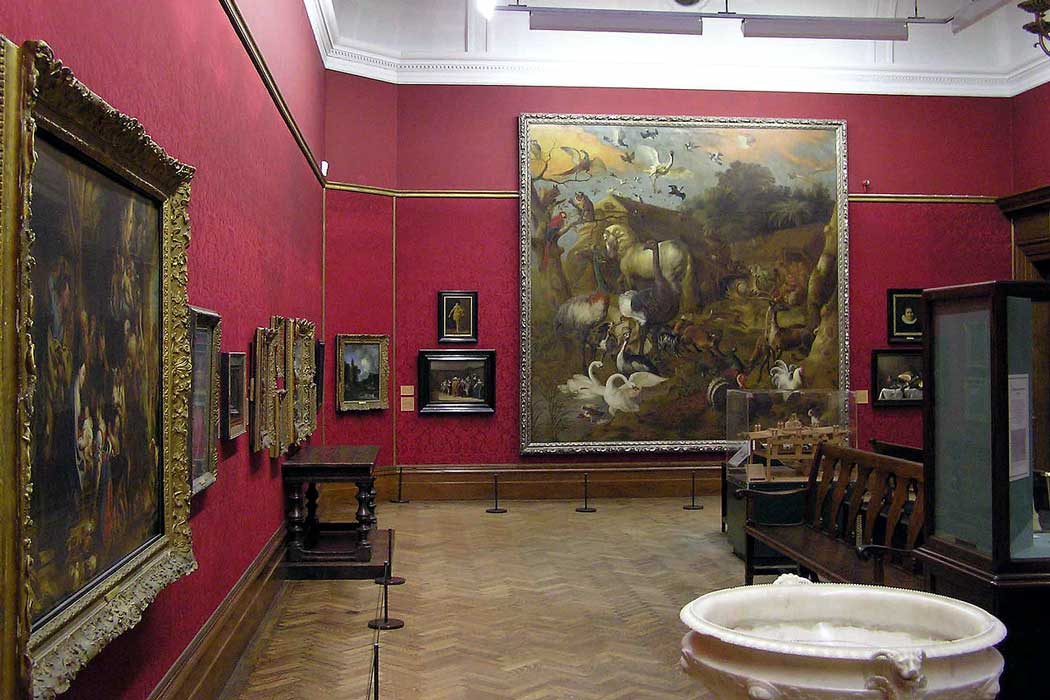The Bristol Museum & Art Gallery has a diverse range of exhibits that cover everything from natural history to fine art.
The museum and art gallery is housed in an Edwardian Baroque Grade II*-listed building that was built in 1901 on the former site of the Salisbury Club. The museum was funded largely by tobacco tycoon Sir William Henry Wills (who would later become Lord Winterstoke) and his cousin, Sir George Alfred Wills.

What to see at the Bristol Museum & Art Gallery
The museum’s main gallery features Angel with Paintpot, a sculpture by Banksy that was made for the museum’s 2009 Banksy exhibition and a replica of a Bristol Boxkite, made for the 1963 film Those Magnificent Men in their Flying Machines, hangs from the ceiling of the main hall.

The ground floor of the Bristol Museum & Art Gallery includes the South West Wildlife gallery, which features an interactive map showing the habitat of local wildlife in southwest England as well as a freshwater aquarium containing fish from the region.
The ground floor also includes the museum’s Egyptology gallery, which has several mummies and Egyptian artefacts that were previously held at the nearby Royal West of England Academy as well as the Assyrian gallery, which focuses on this ancient Middle East civilisation and includes the Assyrian Reliefs, a 3000-year-old wall decoration found at Nimrud in Iraq.
![The 3000-year-old Assyrian Reliefs were found in Nimrud in Iraq and are now on display at the Bristol Museum & Art Gallery. (Photo: © Ad Meskens / Wikimedia Commons [CC BY-SA 3.0])](https://englandrover.com/wp-content/uploads/2018/09/assyrian-relief-bristol-museum-art-gallery.jpg)
The first floor includes the museum’s geology, palaeontology and natural history galleries, which have a large collection of taxidermied animals including Alfred the Gorilla and a Tasmanian tiger.
![The natural history gallery at the Bristol Museum & Art Gallery. (Photo: NotFromUtrecht [CC BY-SA 3.0])](https://englandrover.com/wp-content/uploads/2018/09/natural-history-bristol-museum-art-gallery.jpg)
Other artworks on display include Jan Griffier’s Noah’s Ark (circa 1710) and Giambattista Pittoni’s The Allegory of Winter and Summer (1738).

Temporary exhibitions at the Bristol Museum & Art Gallery
In addition to its permanent collection, the museum also hosts a programme of temporary exhibitions. The most famous of these was the 2009 Banksy exhibition, which was developed in secrecy and launched with no advance publicity.
Current and upcoming exhibitions include:
Being Human: An exhibition of modern sculpture (until 4 October 2020)
The Being Human exhibition, which runs until 4 October 2020, features modern sculpture with many works highlighting the angst and guilt of having survived the Second World War. Free.
Reflections on the Bristol School (2 May–2 August 2020)
The Bristol School is a group of artists who worked in Bristol during the early 19th century and this exhibition is a modern interpretation of how Bristolians reflect on the same themes in the 21st century. The exhibition takes place in the museum’s Bristol School gallery while 25 of the collection’s paintings are on loan to the Musée des Beaux-Arts de Bordeaux. Free.
Pre-Raphaelites: Dreaming of a medieval past (16 May–27 September 2020)
This exhibition (running until 27 September 2020) examines the 19th-century Pre-Raphealite movement and their obsession with the medieval period. The exhibition, which is run in collaboration with the Bowes Museum, draws on the museum’s own collection and it also includes work on loan from the Ashmolean Museum and Tate Britain. £6.
Other regular events at the museum include an annual Chinese-themed festival held each February to coincide with Chinese New Year.
Visiting the Bristol Museum & Art Gallery
The Bristol Museum & Art Gallery is located near the University of Bristol, around midway between Clifton and the city centre, which are both a 15–20-minute walk from here. Nearby points of interest include the Royal West of England Academy (RWA), the Georgian House Museum and the Red Lodge Museum, which are all within a five-minute walk from here.
Admission to the museum is free of charge and it is closed on Mondays, however, there is a charge for some temporary exhibitions.
The museum is wheelchair accessible with level entry to the left of the main entrance.
There is a cafe on the ground floor, however, the museum is located in a relatively vibrant neighbourhood and there are plenty of other places to eat and drink nearby. The museum also has a small gift shop.
There is plenty here to keep you busy for a couple of hours.


There are no comments yet.